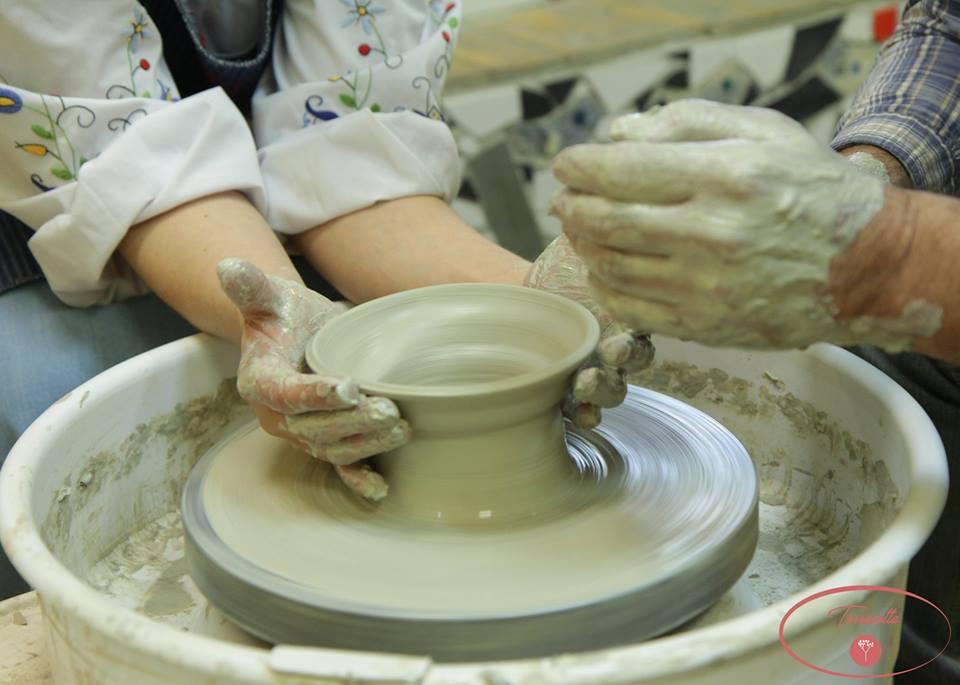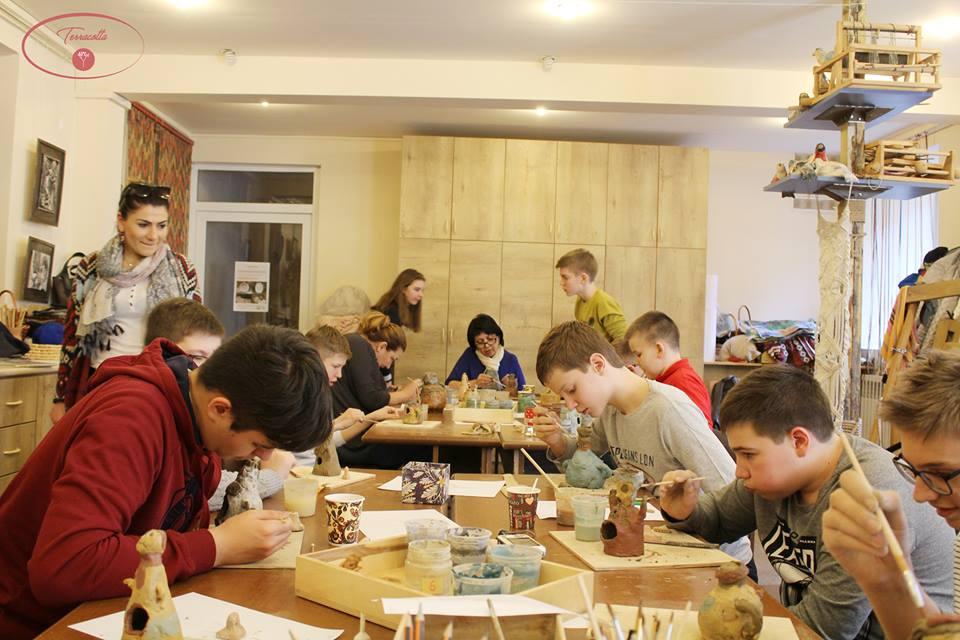
Nana Manucharyan’s Terracotta Studio; Encouraging Creativity in Children Through Art
Nana Manucharyan founded Terracotta Studio in 2010.
She started small, with one studio in Yerevan. There are now four branches in Armenia - three in Yerevan and one in Vanadzor, with a total of ten employees. And she’s looking to expand.
There are several reasons behind Manucharyan’s decision to open Terracotta.
For one, prior to founding Terracotta, she was teaching art to children in a government agency but felt restricted in terms of the scope of the art projects she could plan.
Manucharyan wanted to open her own art studio where she was free to engage artistically with kids.
Sharing her knowledge was also a contributing factor. She says she reached a point as an artist where she realized she wanted to share her knowledge about ceramics and arts. She felt that ceramic arts were somewhat forgotten and hoped to rekindle the medium in Armenia. Manucharyan also wanted to show people that working professionally as a ceramist was possible.
Most children who attend Terracotta already have some art exposure. There are also children who are new to art, having been brought to Terracotta after their parents noticed their interest in art.
Terracotta not only allows the children to create, but also educates them about the history and importance of art. The studio also tries to get children to be more open minded about the artistic sphere, to show them what art is capable of.
This is done to draw out the artistic creativity that dwells in the children. Terracotta also acts as a space where adults and kids can work on art.
Terracotta representatives have also visited schools in the Vanadzor area and given presentations on ceramic art. They want to do the same in Yerevan soon.
They go to schools to educate children about the forgotten art of ceramics and to change perceptions.
Manucharyan says that if you ask a random person about ceramics the usual response is that they either have no clue or mention something about plates and bathroom tiles.
I asked Manucharyan about the method she uses to get the creative juices of the children flowing naturally, from within.
She responded that some children are receptive to begin with while others require more effort to crack.
Regarding the latter, she compares the situation to making friends, talking about how you need to spend time together and share things when you’re becoming friends with someone.
This comes back to sharing, a repeated motif, for Manucharyan.
She says that, at the beginning, when she worked alone, she realised it was impossible and that she needed to share with a team. Manucharyan’s team’s motto is “let’s make art together.”
When asked if she felt she’s succeeded in what she had set out to do, Manucharyan talks about the lasting impact that Terracotta’s had on some students.
Even though they have gone on to non-artistic professions, Terracotta has left its mark on students, sustaining their creative impulses later in life. It’s no wonder that former Terracotta students say their days at the studio as teenagers were among their best.
Employment and an income are also by-products of the Terracotta experience.
Some students of Terracotta end up working with them as instructors.
Some adults have gone on to open their own art studios after learning from Terracotta.
Ceramics and other art created by students can be sold through Terracotta, to customers ranging from tourists to art collectors. Manucharyan is adamant that any art sold is done so with the permission of the artist. At exhibitions, people often approach Manucharyan asking if they can purchase certain pieces made by children. She refuses, arguing that the art belongs to her students, not her.
Terracotta started breaking into the tourism industry two years ago, when it began providing art classes tailored to tourists.
Tourists can take master classes where they make dolls, a ceramic piece or pottery, among other craft items.
The master classes also inform tourists about Armenian culture and art.
Tourists make an item and take it back with them from Armenia as a handmade souvenir. Manucharyan says tourists enjoy this hands-on creative approach rather than just learning about art.
Given that more children than adults attend Terracotta classes, probably because adults have far less free time on their hands, the studio is planning larger and more complex projects for the youngsters.
Many adults tend to take a lesson just to relax, as art therapy for example, and for them the technical aspects of the what they’re doing is unimportant. But there are still plenty of those that come to study and for them Terracotta dives into the technical aspects and teaches them as much as they want to learn. Some of those taking lessons even go on to open their own art studio afterwards.
Three individuals from non-art backgrounds studies at Terracotta and went on to become ceramic artists. Other students became art teachers.
In the end, it seems that Terracotta is trying to instil creativity for the future and present, and while it does look to the past to do so it isn’t merely preserving it.
Terracotta is on a mission to encourage creativity in children today and to sustain that hunger for discovery in the future. Yes, it looks to the past for inspiration, but not solely in a nostalgic way.
During the interview Nana picks up a doll that’s recently been made.
She’s seeing it for the first time.
She laughs and says, “If a ten-year-old did this, imagine what she’ll be able to create as an adult.”
by Sarmen Bedrosian
 Videos
Videos Photos
Photos



Write a comment